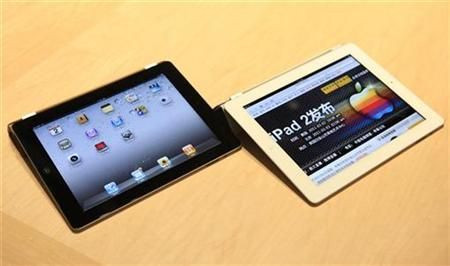Five Ways How Japan Quake May Hit iPad 2 Supply

Apple (NASDAQ: AAPL) may face supply chain disruptions for its newly launched iPad 2 as a 9 magnitude earthquake in Japan impacted several component makers for the tablet.
Following are the five possible ways, the Japan tragedy could hurt iPad 2 supply:
1. Japan supplies key iPad 2 components such as hard-to-replace electronic compass, the battery and advanced technology glass in the display. These are some of the parts that made iPad 2 thinner and slimmer than its predecessor iPad 1.
According to IHS iSuppli, Apple has been outsourcing NAND flash from Toshiba Corp., dynamic random access memory (DRAM) from Elpida Memory Inc., electronic compass from AKM Semiconductor, the touch screen overlay glass likely from Asahi Glass Co. and the system battery from Apple Japan Inc.
2. Though, some of these suppliers reported no damage to their facilities, they could be affected by the logistical issues now hurting most Japanese industries in the quake zone, IHS said.
3. Suppliers are expected to encounter difficulties in getting raw materials supplied and distributed as well as in shipping out products. They also are facing employee absences due to problems with the transportation system.
4. The various challenges are being compounded by interruptions in the electricity supply, which can have a major impact on delicate processes, such as semiconductor lithography.
5. Furthermore, semiconductor facilities in Japan that had suspended manufacturing activities following the quake cannot truly commence full production again until the aftershocks cease.
Earthquakes ranging from 4 to 7 on the Richter scale will make it impossible to really restart these fabs until the earthquakes stop happening with such frequency, said Dale Ford of IHS. Every time a quake tops 5, the equipment automatically shuts down.
Apple has deferred the launch of its iPad 2 in Japan followed by the earthquake and tsunami, but denied that the delay is not associated with a supply chain disruption.
All these supply chain issues come at a time when Apple is rushing to ramp up iPad 2 production to meet stronger-than expected demand for the device. The company this week announced that iPad shipments from the Apple Store have been delayed by one week from previous lead times because of the surge in demand.
Analysts expect Apple Inc to have sold close to a million iPad 2 tablet computers on its debut weekend -- significantly more than the first iPad, which went on sale last April.
Global Equities Research analyst Trip Chowdhry estimates Apple may have sold three times more iPad 2 in the first two days compared to the previous version.
Most analysts had projected sales of 350,000 to 400,000 iPads in its debut weekend.
The profile of iPad 2 buyer is -- 60 percent existing iPad owners, about 40 percent first time iPad buyers, 100 percent own at-least One Apple Product, Chowdhry wrote.
Barclays analyst Ben Reitzes believes significant iPad sales growth in 2011, helped by a major upgrade that features a thinner and lighter design, along with cameras and FaceTime calling.
Reitzes said his iPad unit estimate for calendar first quarter is 5.1 million, which takes into account seasonality after the holiday buying season and a potential lull before iPad 2 ships in April.
Long term, Reitzes estimates 28.8 million iPad units for fiscal 2011 (33.7 million for calendar 2011) and 40 million for fiscal 2012 (42.1 million for calendar 2012) which are likely quite conservative.
Piper Jaffray estimates iPad sales of 27 million units in 2011, and market is expecting as many as 35 million units.
Stock analysis firm Trefis forecasts iPad sales of 23.7 million units for 2011, 30.8 million units for 2012 and 35.4 million units for 2013.
For the first quarter ended Dec. 25, 2010, Apple sold 7.33 million iPads and generated sales of $4.61 billion, representing 17 percent of Apple's total sales of $26.74 billion
© Copyright IBTimes 2024. All rights reserved.





















